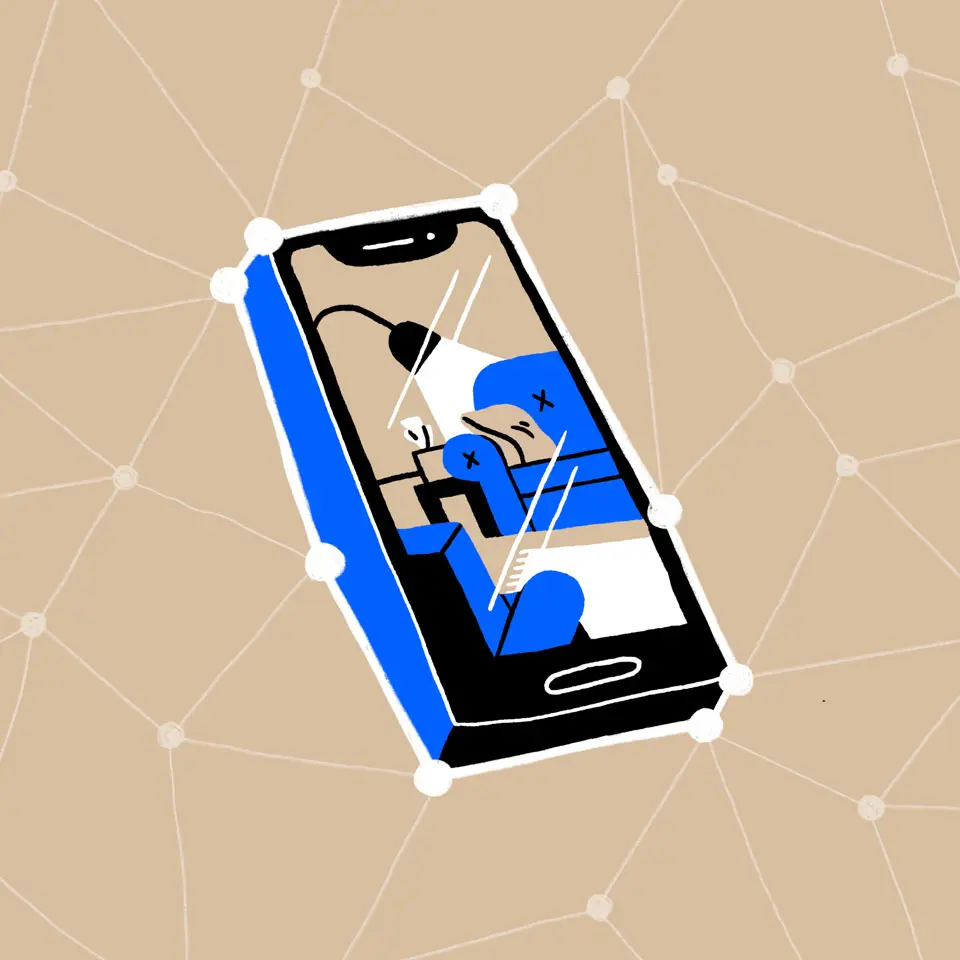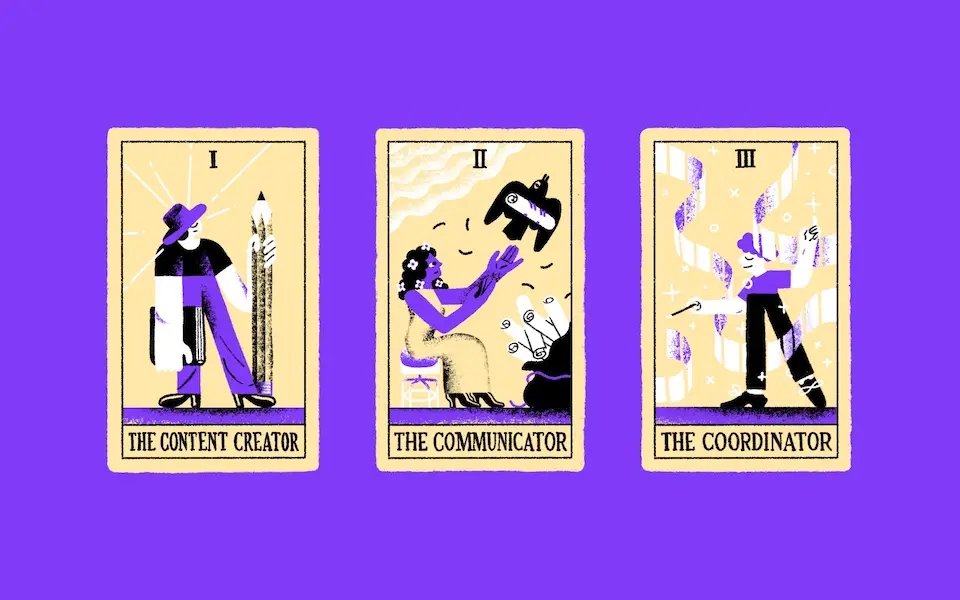
How one psychologist is adapting to virtual therapy, and what you can learn from it
Published on April 13, 2020
Really connecting on a personal level can be hard over chat and video conference. What this psychologist has learned—throughout his career but especially over the last month—might help you connect better with your colleagues.
Anxiety is a topic that, for good reason, gets discussed frequently these days. And not just over the past month. Well before COVID-19 started spreading throughout the world, anxiety disorders were being more widely discussed and accepted, with public figures sharing their stories to reduce stigma around the subject.
What I—a mental health novice—hadn’t quite realized before talking to clinical psychologist Dr. L (anonymity requested for confidentiality reasons), is that there’s a distinction between anxiety and fear.
“Clinically speaking, anxiety is the perception of danger when there may or may not be an actual threat,” Dr. L says. “The fight or flight response stems from threats to our safety, and anxiety disorders are results of that response being triggered more easily. For example, you can feel anxious about public speaking, but there’s no actual threat—your safety is not in jeopardy.”
Unfortunately, the threat of COVID-19 to everyone’s safety is very real. Fear—and anxiety—are widespread. And yet, more so than at any time in recent history, we’re restricted from coping in the ways humans have coped forever: being together, in person.
“It’s tragic that at a time when so many people—all of us, really—are feeling anxiety and fear, we’re not able to support one another in person. That has obviously affected the way I provide care.”
***
Dr. L runs a solo private practice for patients ranging from adolescents to adults of all ages. His typical work ranges from treating depression to stress related to work, relationships, or life transitions. Around the beginning of March, Dr. L started to hear more explicitly from patients about their concerns related to COVID-19. By late March, Dr. L’s practice had turned entirely virtual, with clients receiving proactive notice about the change in format.
“The majority of my patients have been quick to adapt,” Dr. L says. “Of course there were logistical changes, but once we adapt to the use of technology in therapy, much of the structure and format of therapy remains. Still, there are some parts that have changed.”
While many of these adjustments are right in plain sight, like not driving to work, Dr. L has had to adjust to other realities that are quite literally hidden.
“When I’m providing therapy in person, I’m simultaneously observing a patient’s verbal and body language. With video, we really only see each other’s faces. So I don’t see shifts in posture or fidgeting with a hand or leg, which ordinarily give me cues for clues about how a person is feeling beyond what they express verbally. And so, I have to observe facial expressions even more closely, and remember to animate my own face, but without being unnatural. At times, I’ll need to do more verbal digging rather than communicate through non-verbals.”
“Many people feel most connected through eye contact. But on video, that means you’re not actually looking at another person’s face—you’re looking at a little green dot.”
A more conspicuous challenge—and this should resonate with all of us regular folk merely having corporate meetings—is eye contact.
“The camera’s up top, but the patient is on the screen. I’d imagine many people look at the camera infrequently, if at all, during their normal computer usage. My eyes are darting back and forth, but when I’m trying to emphasize something, I look at the camera. Many people feel most connected through eye contact. But on video, that means you’re not actually looking at another person’s face—you’re looking at a little green dot.”
***
One of the main reasons Dr. L requested anonymity for this piece is that psychologists need to be objective, and maintaining privacy is a big part of that. Anything shared with a patient from a psychologist’s personal life would need to be restrained, relevant, and discrete. But if there was ever a time to open up and proactively connect with people, Dr. L says that now would be the time.
“I always have empathy for my clients, whether or not I can personally relate. But I haven’t always experienced what they’re going through, nor would I assume that I would react to the situation in the same way. It's important that I maintain a level of objectivity and that I not find myself so overwhelmed by my own feelings that I'm blind to those my client may be having.”
“But sometimes, I may be able to draw on an experience of my own or that of someone close to me that mirrors some of what my clients are going through. What makes this situation so novel is that, like all people, I have my own reactions and fears and anxieties about the impacts of COVID-19. I worry about how it will impact people in my life, and about the health and safety of those for whom I care.”
“We’re all in uncharted territory, and humans are, by nature, social creatures.”
“I strive to be genuine and authentic with all of my clients, and part of that is being my genuine and authentic self right now. To deny that would be doing them a disservice and be disconnected and inhuman. I do have to draw on some of our shared human experiences of reacting to the impacts of this virus. It goes without saying that we should all be doing that, with our families, friends, or even colleagues with whom you don’t normally share personal vulnerabilities. We’re all in uncharted territory, and humans are, by nature, social creatures.”
***
Dr. L hasn’t gone into his office in a month. But his rug at home is now well-worn from the wheels of his desk chair. He wears a button-down shirt for appointments, with jeans—a compromise between his usual dress shirt and slacks and the hoodie and pajama pants combo that many other workers-from-home are donning these days. He’s picked a neutral background in his house for video sessions, and always wears headphones. He has family around the house, so must be careful to protect privacy of his work while others in the home are doing the same.
“I try to be really intentional about it and to stay focused as if I weren’t at home, even though you’re not in the physical space you typically associate with work.”
These are undoubtedly some relatable anecdotes. Many of us are adjusting to working (effectively) from home, trying to maintain boundaries, and coping with the mental and physical challenges of being at home for so long.
“I can’t say that I imagine myself in my office, to a literal extent,” Dr. L says. “But I try to lock in. My patient, who I normally see in a specific environment, is all I’m focusing on. I block out all physical distractions that might be in my home, as well as any notifications on my devices that could interrupt a session—and now that means anything on my computer, not just my phone. I try to be really intentional about it and to stay focused as if I weren’t at home, even though you’re not in the physical space you typically associate with work.”
When work is done, the work to create some facsimile of normal life during an abnormal time begins.
“You see many therapists saying publicly that it's important for people to take care of themselves. Beyond the physical health measures like washing your hands and social distancing, that means keeping regular routines and doing things you enjoy, to the extent possible. Maybe that's getting exercise, or spending time with your family. Reading a book or watching a movie or TV, but also unplugging from upsetting news when it becomes too much.”
“To that end, I've found that practicing what I preach has been efficacious: immersing myself in my work with clients and then sticking to an after-work, at-home routine. That keeps me balanced and healthily distracted from the anxiety and fear during this extraordinary time.”



